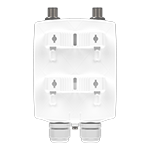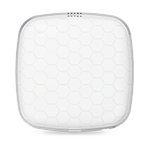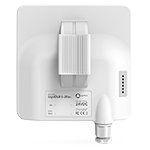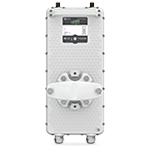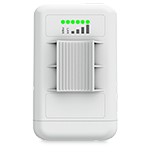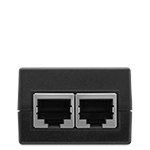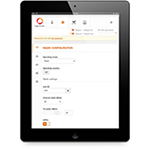- All products
- Access
- Backhaul
- Surveillance
- Industrial applications
- Operators
- Rural connectivity
- Enterprise Wi - Fi
- Hotspot
The Difference Between a Modem and a Router
Today’s computer networking equipment market offers such an immense selection of wired and wireless devices that there should be no wonder as to why some technologies can be confusing at times. What makes it even more puzzling is the fact that most of these devices utilize similar technologies, perform similar functions, are often similar in design, and require the same types of cables.
Modems and routers also make this list—right next to access points, bridges, repeaters, and several other computer networking devices. The difference between a modem and a router is more evident and straightforward than, for instance, the difference between an access point and a range extender, but it is in any case important to be informed as a consumer, especially when in search for new network equipment.
Modems and routers also make this list—right next to access points, bridges, repeaters, and several other computer networking devices. The difference between a modem and a router is more evident and straightforward than, for instance, the difference between an access point and a range extender, but it is in any case important to be informed as a consumer, especially when in search for new network equipment.
Modem. The name modem is a shorthand expression derived from the technical processes that the device performs, i.e. modulation and demodulation. In the early days of networking, the term modem was used to describe a device that transformed speech into analog signals (and vice versa) to be transmitted over telephone lines. Since then, this term has been broadened to describe a variety of devices that perform modulation-demodulation (or encoding-decoding) in its most fundamental sense.
Modulation and demodulation are processes whereby signals travelling between multiple networks are converted into different forms of signals appropriate for transmission over cables or other media.
Think of it this way: it is impossible (nor practical) to transport pure ice over pipes designed for water, but it is possible to melt the ice. Much like ice is melted in order to be transported over a pipe as water and then refrozen at the other end, computer data are converted from one form to another to be transferred over cables or wirelessly and then reverted back into their original form at the destination. With the ice, the form changes, but the chemical composition does not—the same applies to data because its form changes, but the information contained within does not.
It is the modem’s job to convert and revert the signals travelling from one local area network over the Internet’s infrastructure to another local area network.
Modulation and demodulation are processes whereby signals travelling between multiple networks are converted into different forms of signals appropriate for transmission over cables or other media.
Think of it this way: it is impossible (nor practical) to transport pure ice over pipes designed for water, but it is possible to melt the ice. Much like ice is melted in order to be transported over a pipe as water and then refrozen at the other end, computer data are converted from one form to another to be transferred over cables or wirelessly and then reverted back into their original form at the destination. With the ice, the form changes, but the chemical composition does not—the same applies to data because its form changes, but the information contained within does not.
It is the modem’s job to convert and revert the signals travelling from one local area network over the Internet’s infrastructure to another local area network.

Router. Routers are computer networking devices that serve two primary functions: [1] create and maintain a local area network and [2] manage the data entering and leaving the network and the data moving inside of it.
Once set up and ready to go, a router creates a local area network (often abbreviated LAN). A LAN is a computer network that interconnects multiple end devices within a small area, such as a home or office. Devices connected to the LAN—wirelessly or using cables—can interact with or share data among each other and gain access to the Internet, if an Internet connection is available.
In simpler terms, a router is the post office of the computer networking world. As it receives mail (i.e. data packets) from all around the world (i.e. the Internet), it is organized and forwarded (i.e. routed) to the citizens (end-devices) within that specific district (i.e. local area network). Mail can also be sent among citizens in the same district and to addresses outside of it. All mail is processed through the post office.
The Puzzling Part. People often confuse modems and routers for two reasons. The first is association. Both devices are often found within the same network structure. As data enters the premises, it is first processed by the modem, after which it travels to the router, where it is redirected to the appropriate end devices. The fact that both the modem and the router are on the same line of traffic, next to each other, and ultimately achieving the same goal, i.e. delivering and dispatching data, consumers may sometimes mistake one for the other.
The second reason is dual-functionality. Combination routers/modems bring together the functions of two individual devices to form a single network solution. However, since the routing function is more apparent to consumers, these devices are more often referred to as routers. This forms a misconception that routers also perform modulation and demodulation by default and that the terms router and modem are interchangeable. That is, however, not the case.
Distinctions. Modems and routers are fundamentally different devices. As previously explained, modems transform one type of data signal into a different type (one that is appropriate for devices within a local area network), whereas routers distribute the data received from the modem to smartphones, laptops, and other end devices in the network.
Routers also create and maintain local area networks, allowing multiple devices to communicate and share data with each other. A LAN can exist regardless of the availability of Internet access.
Modems, on the other hand, cannot create LANs, nor can they directly communicate with multiple devices. However, they are necessary in providing access to the Internet.
LigoWave Technologies. LigoWave does not offer dedicated modem or router solutions, but these technologies are by no means a foreign concept to how LigoWave devices work.
The modem is one of the most important pieces of hardware used in LigoWave devices. Multiple integrated modems not only provide extended compatibility with other equipment, including that of other manufacturers, but also guarantee universality, practicality, and greater functionality.
As for routing, LigoWave’s Infinity series of wireless access points are equipped with a router mode. It allows local area connectivity for any Wi-Fi-based end device regardless of location and application. Infinity devices can therefore be a substitute for conventional routers.
Stay Informed. While modems and routers can be confusing to some, the core principles and functions differ significantly. Not only are the devices on two different levels within the network, but they perform different functions: modems transform signals coming into and going out of the local area network, while routers distribute data to, from, and among devices. So, the next time there is a need for a new modem or router, rest assured that an informed decision will be made during purchase.
The second reason is dual-functionality. Combination routers/modems bring together the functions of two individual devices to form a single network solution. However, since the routing function is more apparent to consumers, these devices are more often referred to as routers. This forms a misconception that routers also perform modulation and demodulation by default and that the terms router and modem are interchangeable. That is, however, not the case.
Distinctions. Modems and routers are fundamentally different devices. As previously explained, modems transform one type of data signal into a different type (one that is appropriate for devices within a local area network), whereas routers distribute the data received from the modem to smartphones, laptops, and other end devices in the network.
Routers also create and maintain local area networks, allowing multiple devices to communicate and share data with each other. A LAN can exist regardless of the availability of Internet access.
Modems, on the other hand, cannot create LANs, nor can they directly communicate with multiple devices. However, they are necessary in providing access to the Internet.
LigoWave Technologies. LigoWave does not offer dedicated modem or router solutions, but these technologies are by no means a foreign concept to how LigoWave devices work.
The modem is one of the most important pieces of hardware used in LigoWave devices. Multiple integrated modems not only provide extended compatibility with other equipment, including that of other manufacturers, but also guarantee universality, practicality, and greater functionality.
As for routing, LigoWave’s Infinity series of wireless access points are equipped with a router mode. It allows local area connectivity for any Wi-Fi-based end device regardless of location and application. Infinity devices can therefore be a substitute for conventional routers.
Stay Informed. While modems and routers can be confusing to some, the core principles and functions differ significantly. Not only are the devices on two different levels within the network, but they perform different functions: modems transform signals coming into and going out of the local area network, while routers distribute data to, from, and among devices. So, the next time there is a need for a new modem or router, rest assured that an informed decision will be made during purchase.
